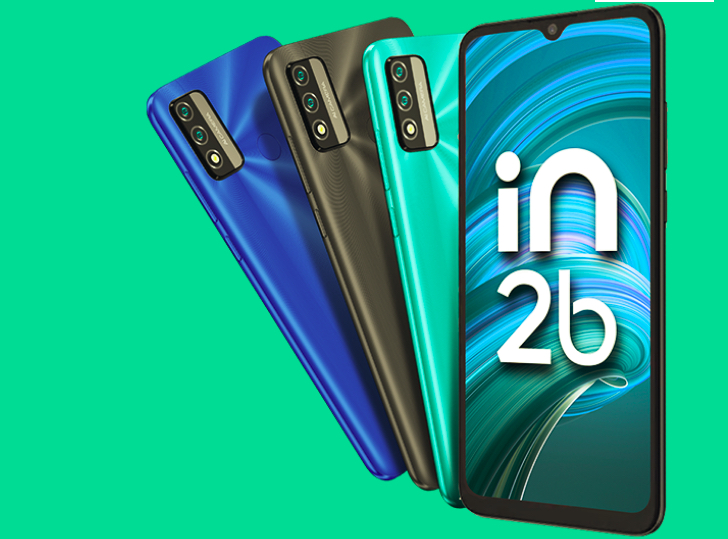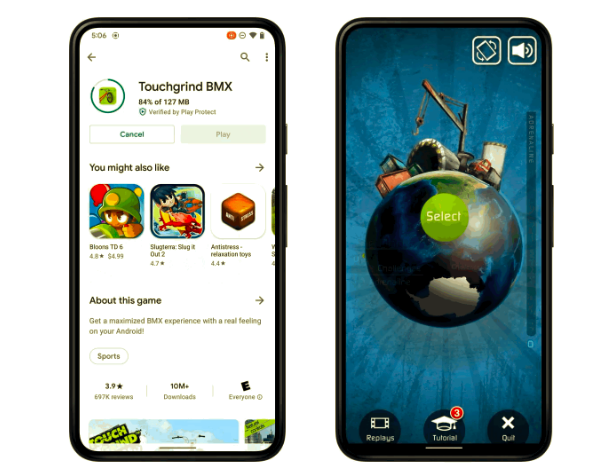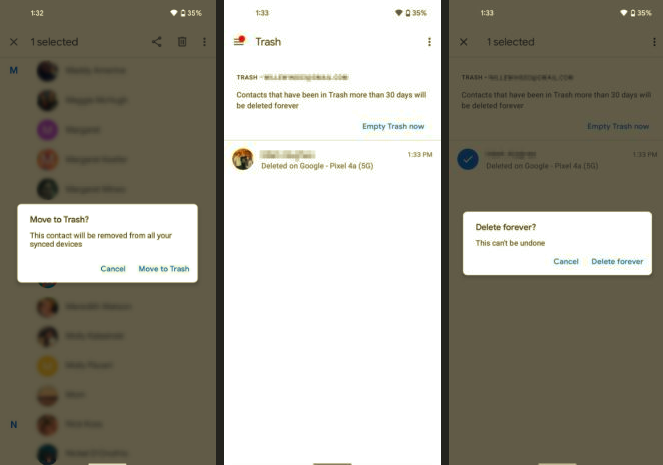Updating my editorial from last year, in roughly the same season, the same cultural comparison is still valid – because both smartphone companies have iterated on last year’s models. But of course there are some new aspects and features to discuss. And so, with slight plagiaristic apologies to those who read last year’s editorial… do you prefer Star Trek or Star Wars? If the former, best go for the HTC One M8. If the latter, head for the Samsung Galaxy S5. There, done.
What’s that? You want some explanation, too? I bring the analogy up because the two smartphones, despite their parity in tech consciousness, are very different in feel and ambition. The HTC One M8 is sleek, metallic, sealed and (almost) perfectly formed, with nothing left to chance, part of a hermetically sealed universe in which there’s little left to chance. In contrast, the Galaxy S5 can get a little messy (quite literally, given the IP67 rating!!), with a peel off back, cheaper materials, bolt on batteries and memory cards, yet all providing more interest, more flexibility and more room for imagination.

Yet, despite the differences in design and outlook, these two smartphones have become (at least until the Sony Xperia Z2 arrives) the most prominent competitors (other Samsung models excluded!) in the Android landscape. Here’s my assessment – can there be a winner?
Ultimately, both the HTC One M8 and Samsung Galaxy S5 achieve the same goal, in that they’re both fast devices that are largish for a ‘phone’ and give you access to all the Google services and Android applications that you need. In fact, it’s surprising how many significant differences there are, even if the man in the street might not appreciate most of them at a first glance.
Build quality, design and durability
Interestingly, it’s hard to judge the materials used by sight alone – the Galaxy S5 uses a (ridged) faux metal plastic rim around its edge – it’s very convincing until you realise that it’s always warm to the touch (because plastic doesn’t conduct heat – I refer you to school physics classes!) – matching up with the main plastic frame and removable plastic battery cover – you can probably sense a theme here. In contrast, the HTC One M8 is machined out of a solid block of aluminium, apparently, and feels like a premium device from the second you hold it for the first time.

This impression is enhanced by the subtle curvature of the One’s back, meaning that it nestles well in an adult palm, despite its overall size. The Galaxy S5 at least has nicely rounded corners in each dimension and so is not unattractive or uncomfortable.

Another critical design difference is that the HTC’s only physical button (other than the volume rocker) is on the top face of the device, meaning an uncomfortable one-handed stretch to operate it – happily a double-tap to wake system in the Sense interface means that you rarely have to stretch in this way. In contrast, the Galaxy S5 has Samsung’s standard arrangement of a side-mounted wake button plus a physical ‘home’ button on the front face of the phone – either can be easily used one handed to wake the screen and get into your phone – very tactile and no ‘double tap’ needed either.
In terms of overall form factor, the One M8 is taller and narrower, mainly due to the extra space given to speakers at either end of the front face. While the S5 is shorter and very slightly wider – though both are still large for phones, even allowing for the current trend towards bigger and bigger screens.
Durability is good for both phones – at least in terms of survivability. Cosmetically, the One M8’s aluminium is easy to scratch, while the Samsung plastic is traditionally easily dented, especially on the rim. However, the ridged design on the S5, added to the heavily textured back cover, means that marks from drops and accidents are better camouflaged. I’d give the nod here to the S5, if only because it’s much harder to drop – the textured back is very ‘grippy’, while the smooth metal on the One M8 almost dictates use with an in-situ case.
Pros and cons for each then. HTC One M8: 8, Galaxy S5: 8
Display
Modern smartphones are essentially big touch sensitive displays with some fancy electronics and a battery round the back, and the screens dominate each device here – they’re both gorgeous, with high resolution (1080p) and high contrast. Both are also usable (and roughly comparable) even outside in daylight.


It’s clear that both HTC and Samsung have brought their ‘A’ game in terms of component choice to these handsets. The One M8’s screen is very slightly crisper (being RGB and smaller), while the S5’s screen is of slightly higher colour contrast (being AMOLED) and larger overall. Samsung gets an extra nod for being able to set the screen’s colour temperature and characteristics in software, but it’s not enough to split the tie overall here.
Following something of a trend, a dead heat again. HTC One M8: 10, Galaxy S5: 10
Camera and camcorder
Both devices claim to represent just about the ultimate smartphone camera experience, but they approach imaging from a very different direction.
HTC has used a huge slice of lateral thinking in, first of all, designing around a lower (four) megapixel count: having larger, fewer pixels means (in theory) less digital noise, better low light performance and less work for the image processor, which means everything can happen faster, including the integration of a ‘zoe’ burst mode for mainstream use. Secondly, a ‘depth’ camera records the rough distance of objects in the field of view at capture time, enabling various special effects – ‘uFocus’ uses selective blurring to simulate shallow depth of field.
In contrast, the Samsung Galaxy S5 has gone the other way. Using a slightly larger 1/2.6″ sensor, it packs in 16 megapixels (at 16:9), aiming to max out on detail, and helped by an ‘ISOCELL’ sensor – of which more in a future article. Samsung have done a great job, too, in that their advanced image processing algorithms work well to reduce noise while preserving incredible detail. Meaning that you can take a 16 megapixel photo of a scene and, later, crop out a four megapixel section (the same as produced full-frame on the One M8) and be very happy with it.
Ideologically, HTC’s approach, with the much bigger pixels that are naturally ‘purer’, is best, but it’s hard to argue with the stunning results from the Galaxy S5. Photos from the latter start to compare with those from Nokia’s leading camera phones, including the specialist Lumia 1020, which has a much bigger sensor, and I can think of no higher compliment.
In contrast, there’s no room at all for cropping in the HTC One M8’s images – in fact, even the four megapixel images that are produced show massive over-sharpening and other processing artefacts. I was amused to see an official HTC tips guide recommend increasing photo quality by shooting in fully manual mode and dialling back sharpness!
See my full One M8 review for photo samples. Ditto for the Galaxy S5.
Of course, in addition to considerations of pure photo quality, there’s also the question of ‘smart’ camera functions. HTC has the potentially life saving ‘zoe’ burst mode, effectively always capturing to a buffer in the application and then ‘shooting’ 8 stills from before you tapped the shutter icon and 16 more afterwards. So you see a magic moment and tap the shutter a tiny bit too late – except that it’s not too late, since the One M8 has the shot covered, along with 23 alternatives for you to pick. Plus uFocus and other special effects can be fun to play with, especially for sharing on low resolution sites like Instagram.
Samsung has its ‘smarts’ too, though implemented in a slightly gimmicky way, in that if you want to shoot in a burst mode on the S5 then you have to manually select ‘Shot & More’ each time. At least it’s an improvement over the camera in the old S4, in which you had to explicitly pick which burst mode you wanted before shooting – clearly unworkable in the real world.
In terms of video capture, 1080p footage from each device is decent, though neither device is optically stabilised. The S5 can also shoot at a full 4K if needed, though you do lose software stabilisation and some other capture options as a result.
Overall, the S5 is far superior in terms of photo quality and detail, but the One M8’s Zoe mode is still worth noting, especially around young kids and pets, where magic moments can’t always be predicted(!)
A convincing win to the S5 here overall though – HTC’s imaging plans just aren’t really panning out. HTC One M8: 6, Galaxy S5: 9
Multimedia
Both devices are excellent for multimedia consumption, whether YouTube video, sideloaded movies or music, with large, high resolution screens that are extremely comparable. The Galaxy S5 takes a slight edge with the gorgeous colours on its Super AMOLED screen, which work brilliantly for video content, but then the HTC One M8 slams back with a bigger advantage – the truly cinematic sound from the front-mounted stereo speakers.
See my One M8 review for full photos and detail, but the ‘BoomSound’ set-up in the HTC One M8 is superlative and absolutely perfect for sitting down watching some video content, with stereo sound in high quality projected around your ears. The S5’s speaker is OK, but is mounted on the back and suffers from rather peculiar vibrations as the rubber-suspended back cover resonates with bass frequencies in the sound being played. Not very pleasant if you’re holding the phone and surely a design flaw?
HTC One M8: 9, Galaxy S5: 7
Interface and applications
Both the HTC One M8 and the S5 run Android 4.4 Kitkat, so they’ll be largely the same in terms of interface, right? Wrong. Although most Android applications look largely similar, there are numerous examples of differentiation applied by both HTC and Samsung.
The most obvious is in the control button arrangement: virtual vs physical. Stock Android (4.x) is centred around three virtual control icons (back, home, recent) and the One M8 follows this exactly, just as seen on the Nexus devices, for example. Last year’s One (M7) used a modified two button arrangement, so credit to HTC for making this change. The only downside is that the black bar which used to host these controls is now present but vacant, totally wasted frontal real estate. Harumph.
Samsung has persisted with physical (capacitive and mechanical) controls for the S5, but has reassigned what is traditionally a ‘menu’ key to be ‘recent apps’ and thus largely conforming to the stock Android convention – apart from the order of the controls. Still, I guess we should be thankful for small mercies?
Neither arrangement is, therefore, perfect.
The UI skins, Sense and Touchwiz respectively (again see my One M8 and S5 reviews for full details), each introduce ‘improvements’ to stock Android and are worthwhile in their own ways. For example, hiding application icons that aren’t needed, adding and removing homescreens, and so on.
Sense’s big differentiator in recent times has been BlinkFeed, its aggregator of news and social updates, but Samsung S5 owners now get a slightly tweaked version of Flipboard, rebranded as ‘My Magazine’ and occupying exactly the same ‘swipe left’ position in the homescreen panorama.
The application bundles are largely equivalent, with Samsung perhaps innovating more with its multi-window view and ‘finger hovering’ air view functionality. Plus a S Health fitness suite, partly aided by a gadget described below.
Overall, though, there’s little to split the two devices here in real world, day to day Android use – both are fast and effective. HTC One M8: 8, Galaxy S5: 8
Gadgets and gizmos
Both One M8 and Galaxy S5 have an infrared ‘beamer’ integrated into their top edges, so honours even here. The One M8’s most ‘innovative’ extra is a special ‘dots’ flip case, through which basic notifications (calls, weather, alarms) can be seen (at very low resolution) and interacted with, thanks to super sensitive touch on the display. Which sounds good, but Samsung do a similar flip case for the S5 which includes a full resolution view and controls in a ‘window’, arguably more useful and flexible.
The S5 draws ahead in the ‘gadgets’ stake with two extra sensors: a fingerprint scanner in the home button which is a bit of a gimmick, proving unreliable in real world use (and worlds away from the reliability of the finger detection in the iPhone 5S); and a more useful heart rate sensor and dedicated red LED – this is remarkably accurate and gives readings within ten seconds or so. If fitness and pulse recording is part of your smartphone use case then the S5 is almost a shoe-in at the moment.
Edging ahead, the S5 gets the nod here, of course. HTC One M8: 7, Galaxy S5: 9
Battery life, storage and flexibility
It’s here that we come to the major difference between the two devices. The S5’s battery is slightly larger at 2800mAh (c.f. 2600mAh), though its bigger screen and Touchwiz tend to be slightly hungrier, so overall battery life per charge is about the same.
However, as expounded at length in my recent editorial, the expandable, flexible nature of the Galaxy range makes for a much more powerful device in everyday life. Used to your battery dying just as you head out for the evening? Slam in a charged spare cell (Samsung mains battery chargers are cheaply available). Need more mAh? Just buy an official extended battery and replacement back? Need wireless charging? Again, there’s an official accessory/modification. Fast forward to 2015 and your phone is a year old – the battery will be down to about 60% capacity if you’ve worked it hard, but on the S5 you can just purchase and insert a brand new spare. And so on.

In contrast, the battery in the HTC One M8 is sealed and all bets, all options are off. Yes, you can bring along a microUSB external charger, but it’s not really the same.
Similar, though less clear cut, arguments applied to storage when I was looking at the HTC One (M7), but the company has listened to critics like me and finally put in a microSD expansion bay. Both the One M8 and S5 smartphones are therefore on a level playing field here, though neither manufacturer puts a card in the box. Which is fair enough, since anyone discerning is going to buy and insert something serious, such as a 32GB or 64GB (or even 128GB) card.
The battery flexibility issue clinches things here for the S5 though. HTC One M8: 7, Galaxy S5: 9
The verdict
Adding up my points tally gives 60 points for the Samsung Galaxy S5 versus 55 points for the HTC One M8, a result which feels about right. “Which is the best Android smartphone to buy” is a question that is often quickly answered with “the HTC One M8” (or the 2013 M7), in that the phone is made of metal and immediately impressive in almost every area. Yet, talking to real users, they find the S5 (and S4 before it) just edges it in terms of what they can do with the device, week in, week out.
So the win goes to the S5 overall, but it’s a fairly narrow win and there are a lot of other pros and cons mentioned above that really should be taken into account before someone buys either device.
I stand by my Star Trek/Star Wars analogy. In real life, I think we’d all love to live in the former ‘immaculate’ universe but would find ourselves in the ‘messy’ latter, and this applies just as aptly to the rivalry between the HTC One M8 and Samsung Galaxy S5.
PS. Thanks to the Ideas Network for the loan of the review Galaxy S5, powered by Vodafone 4G in the UK.









